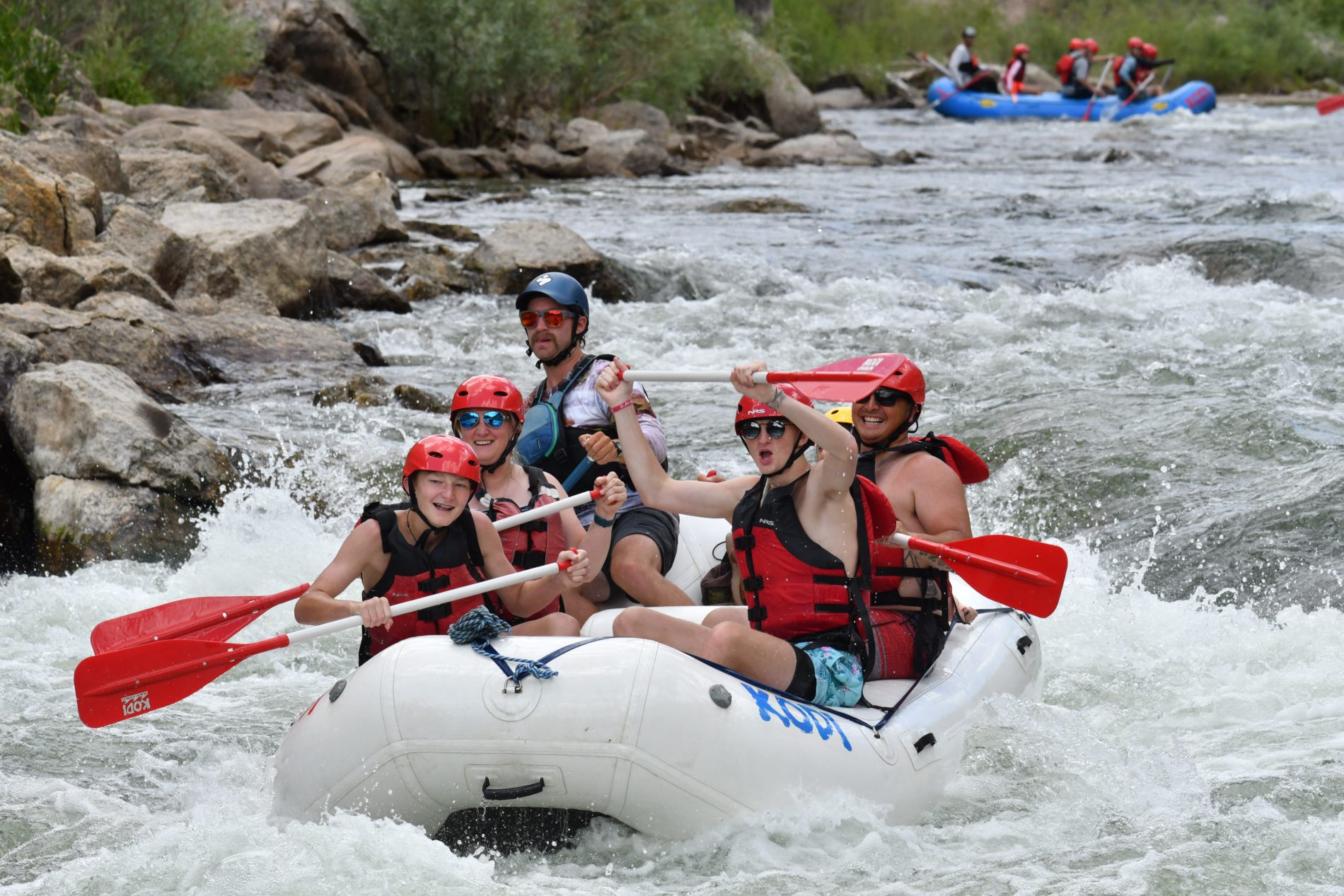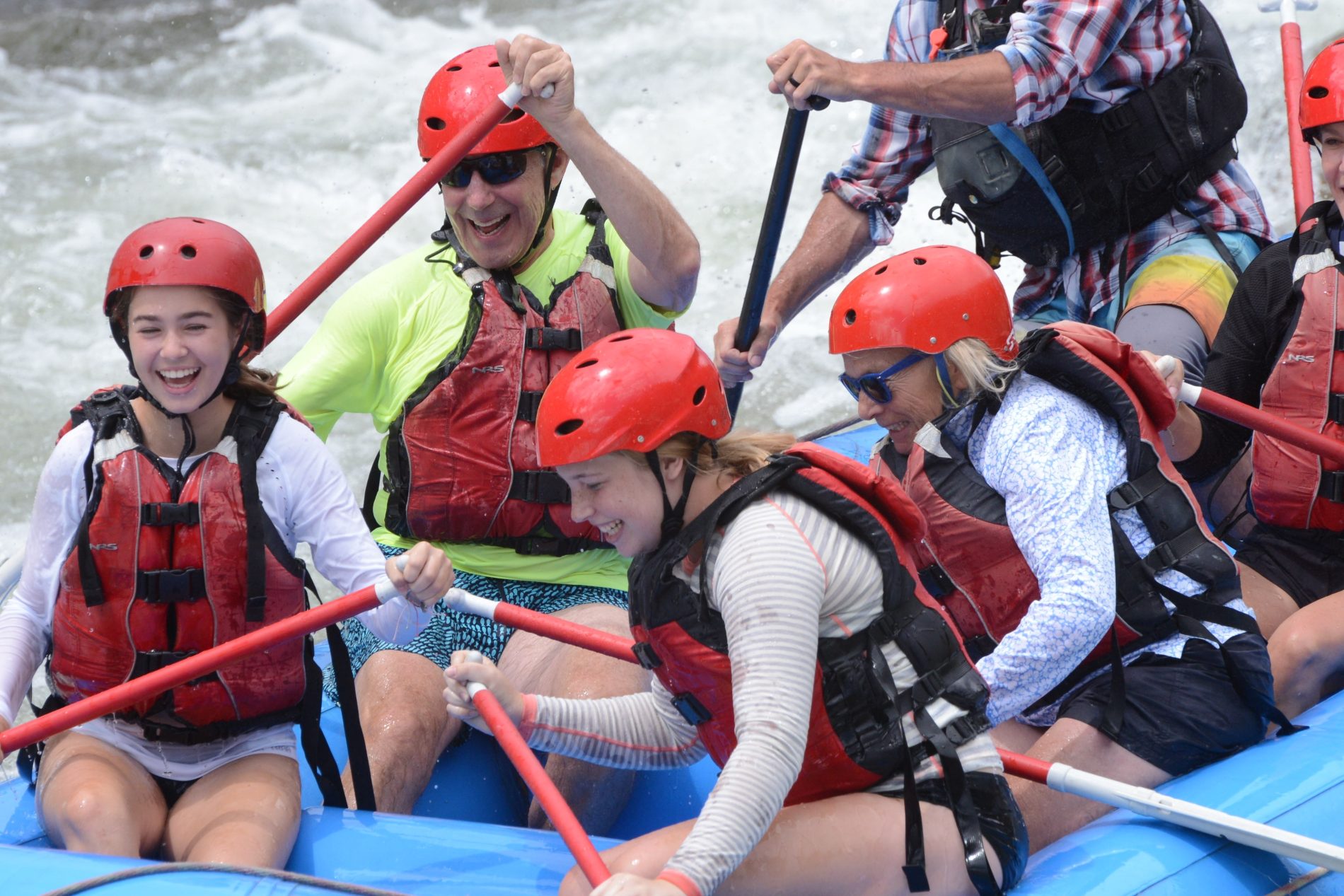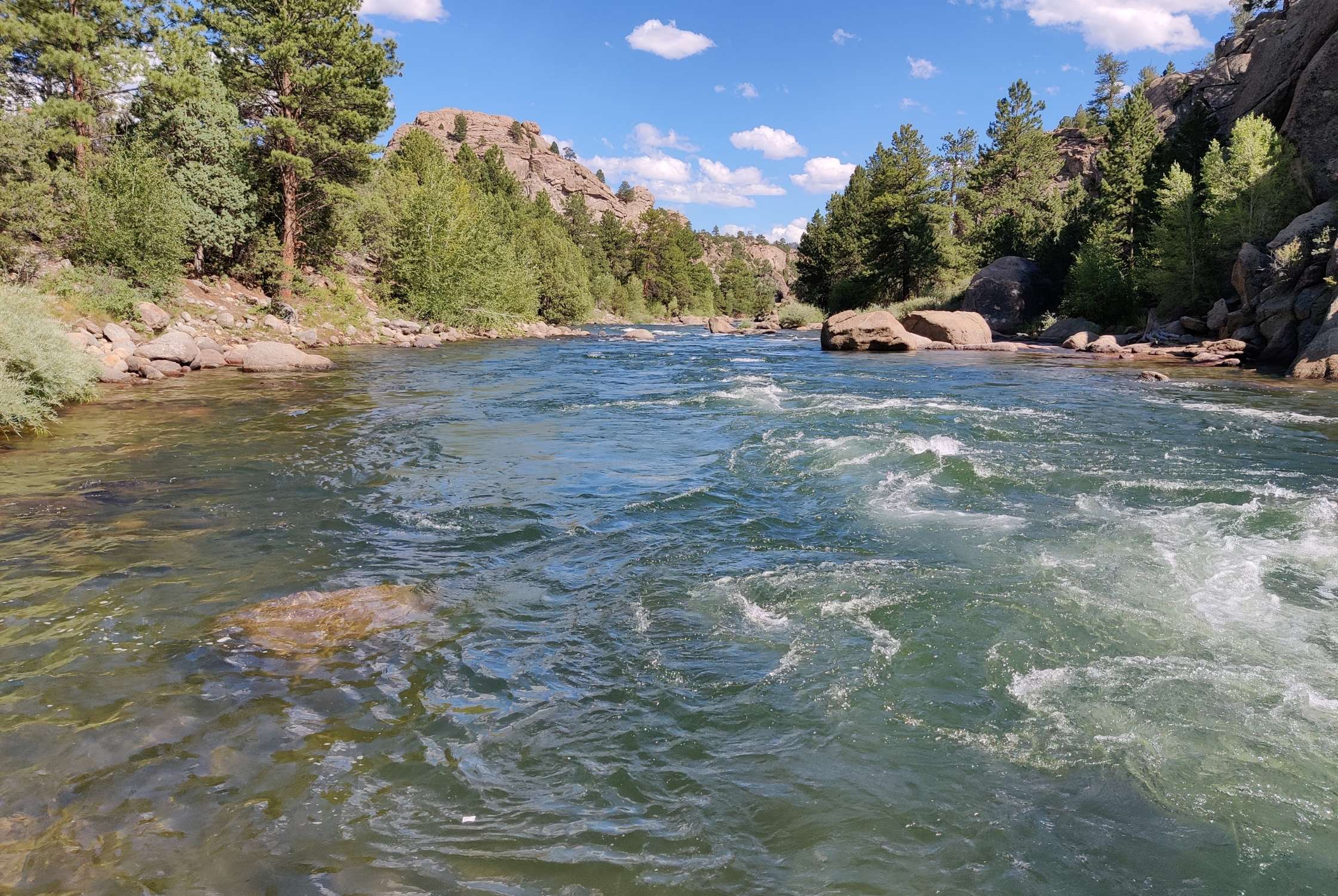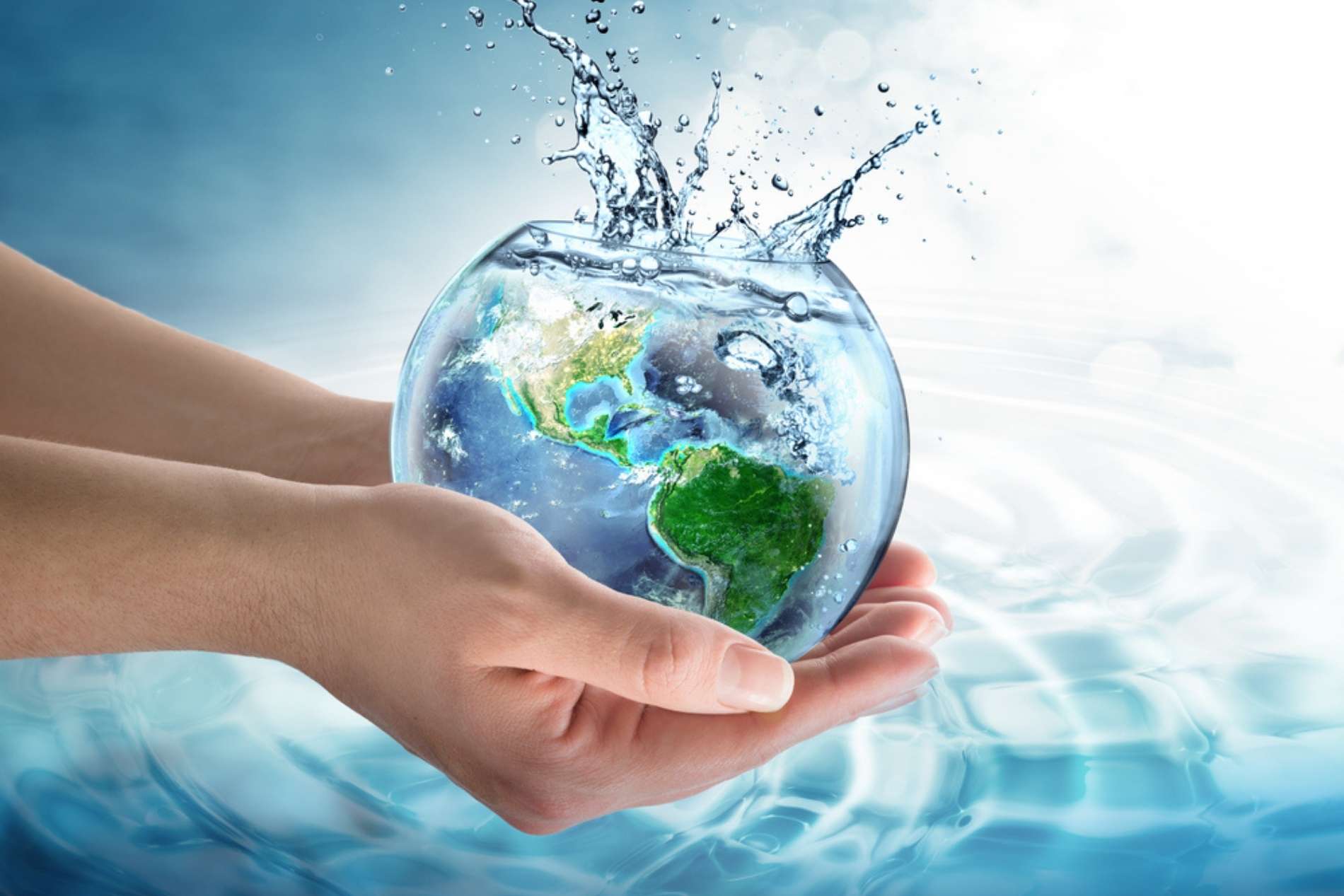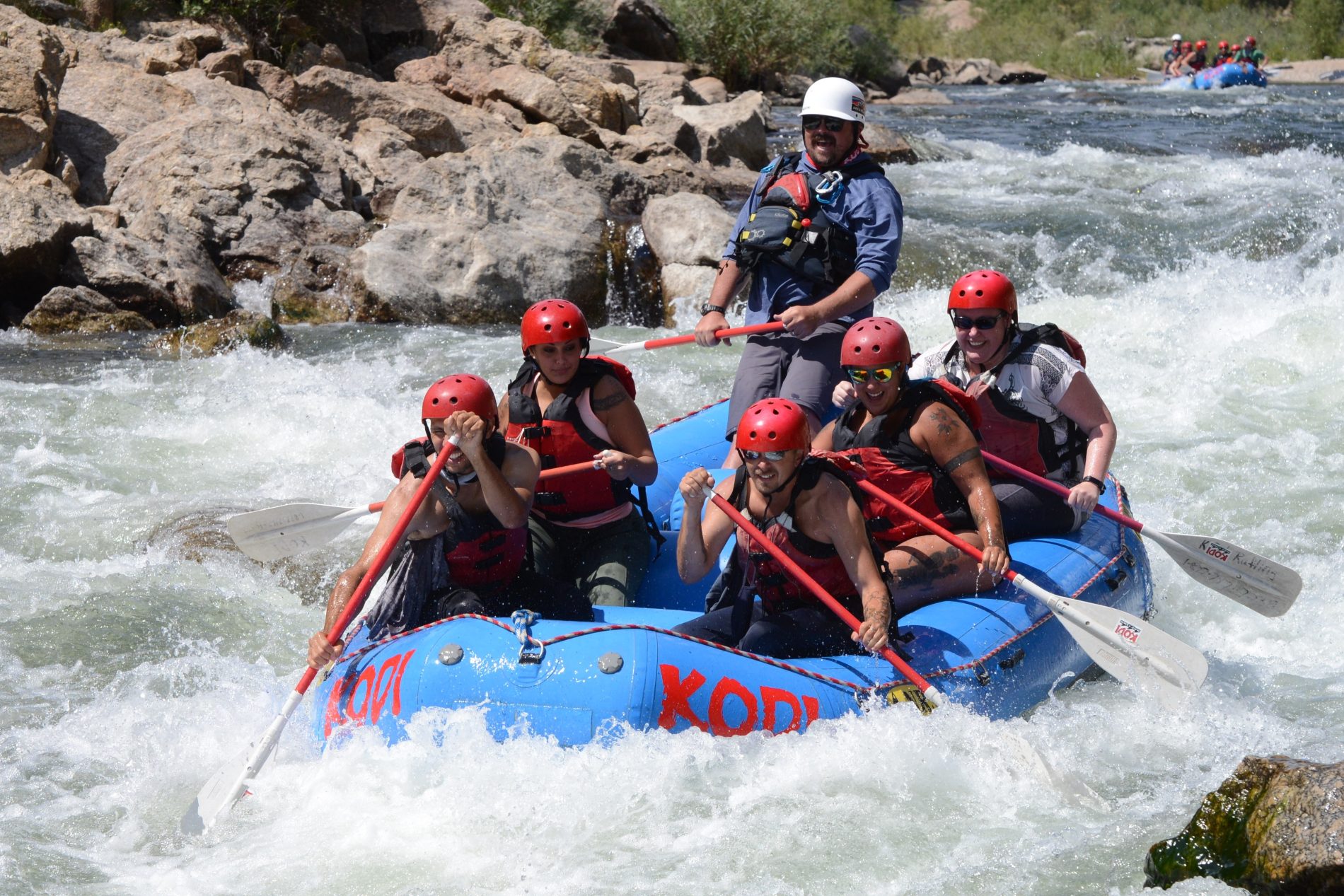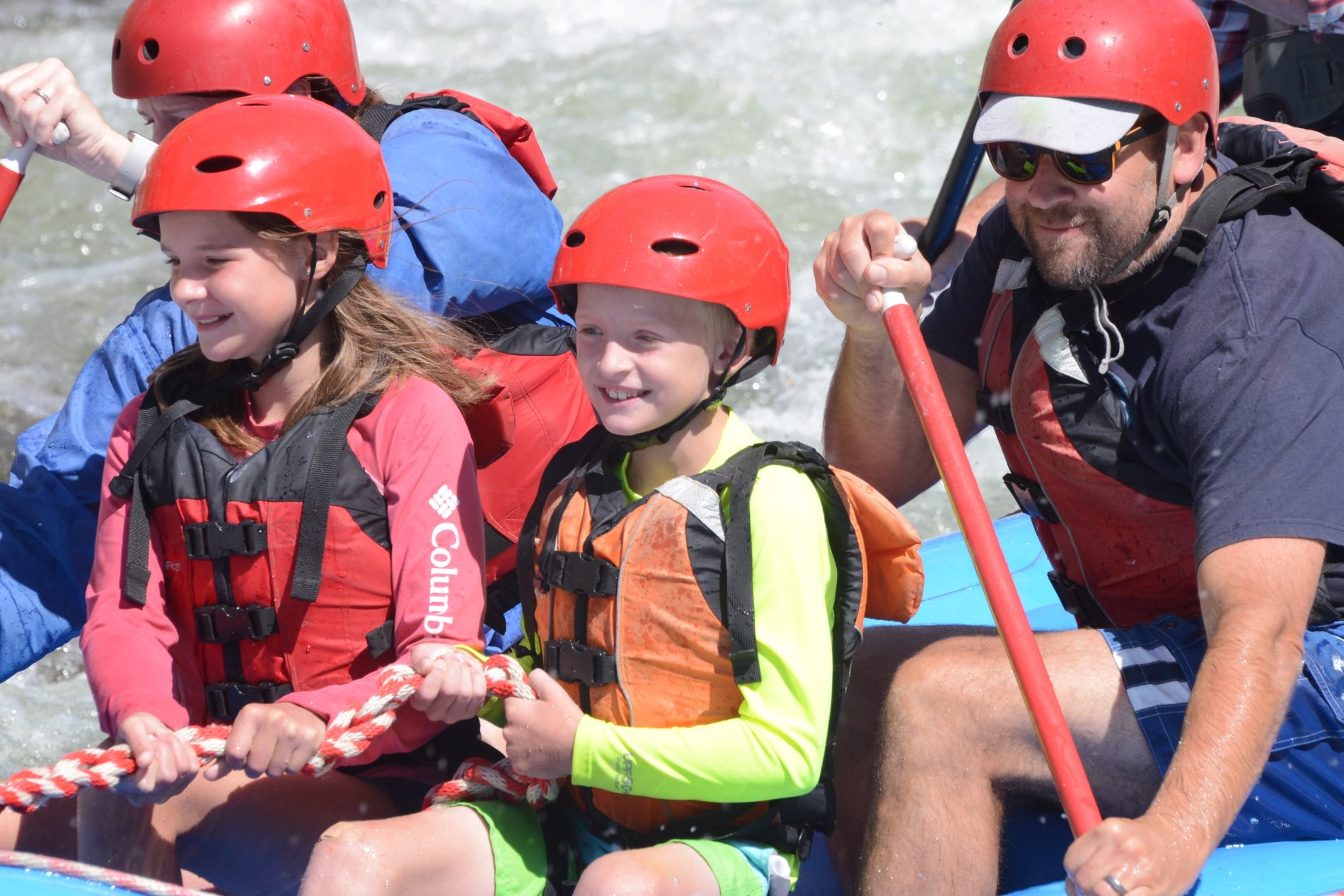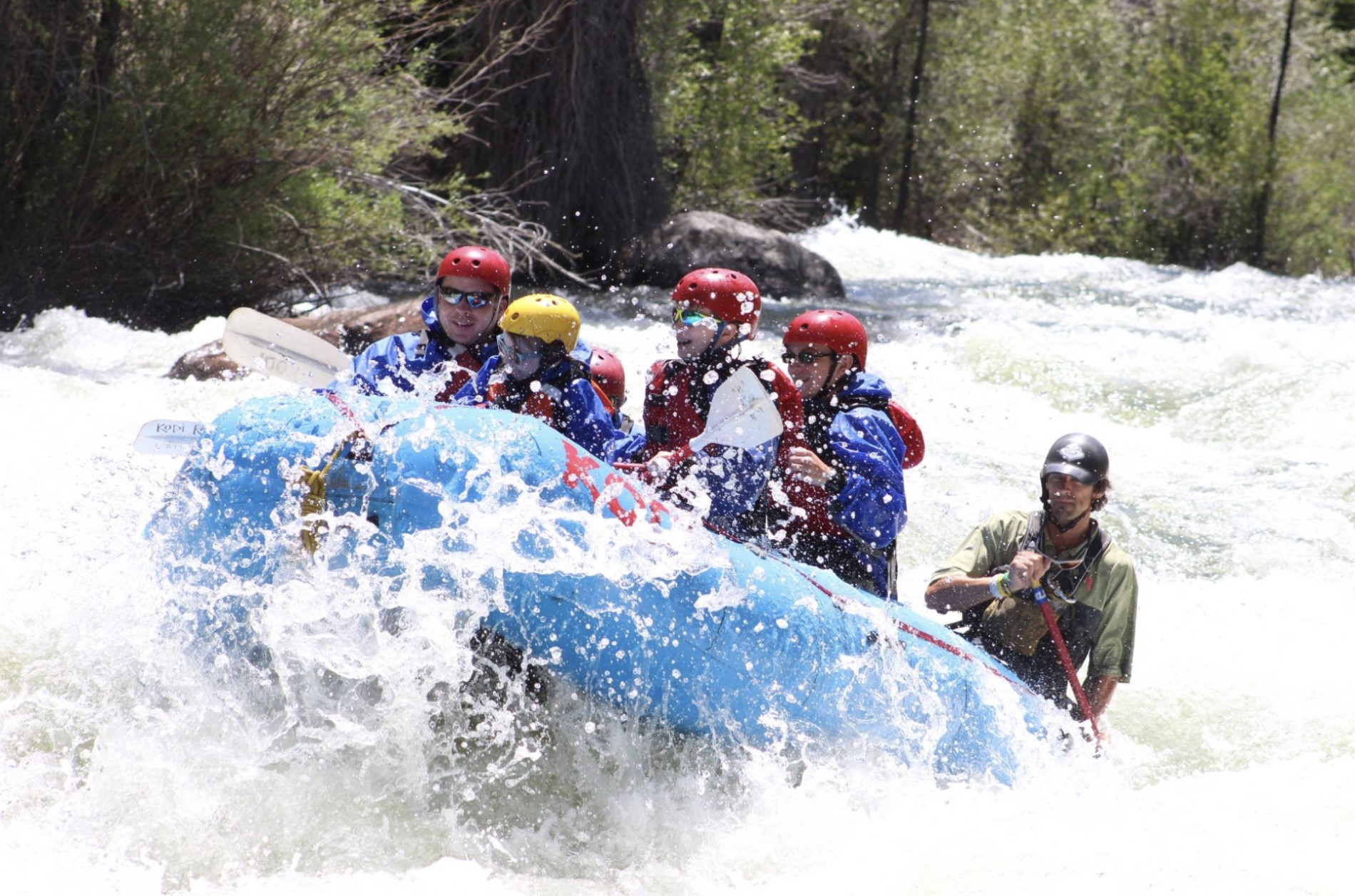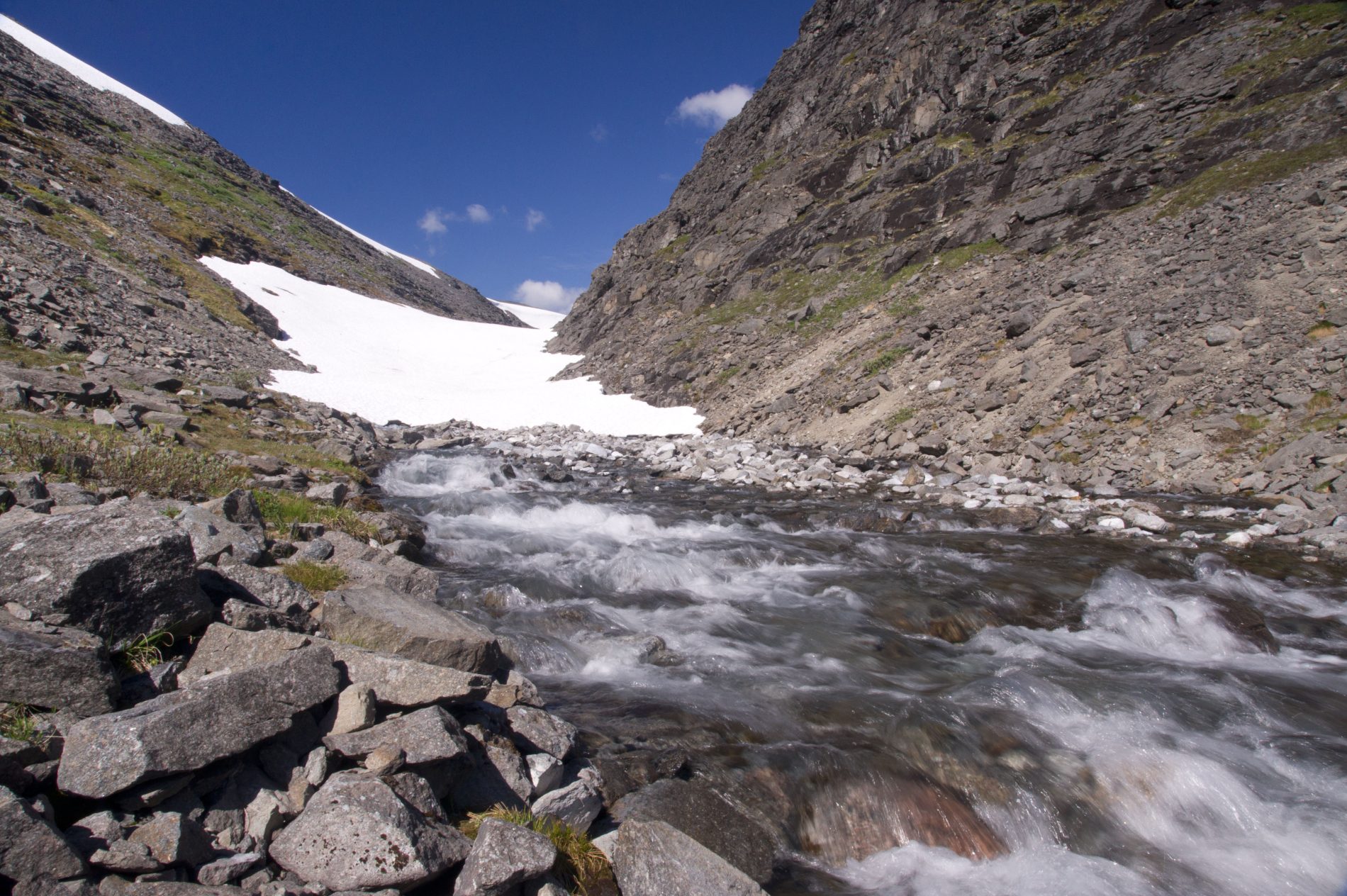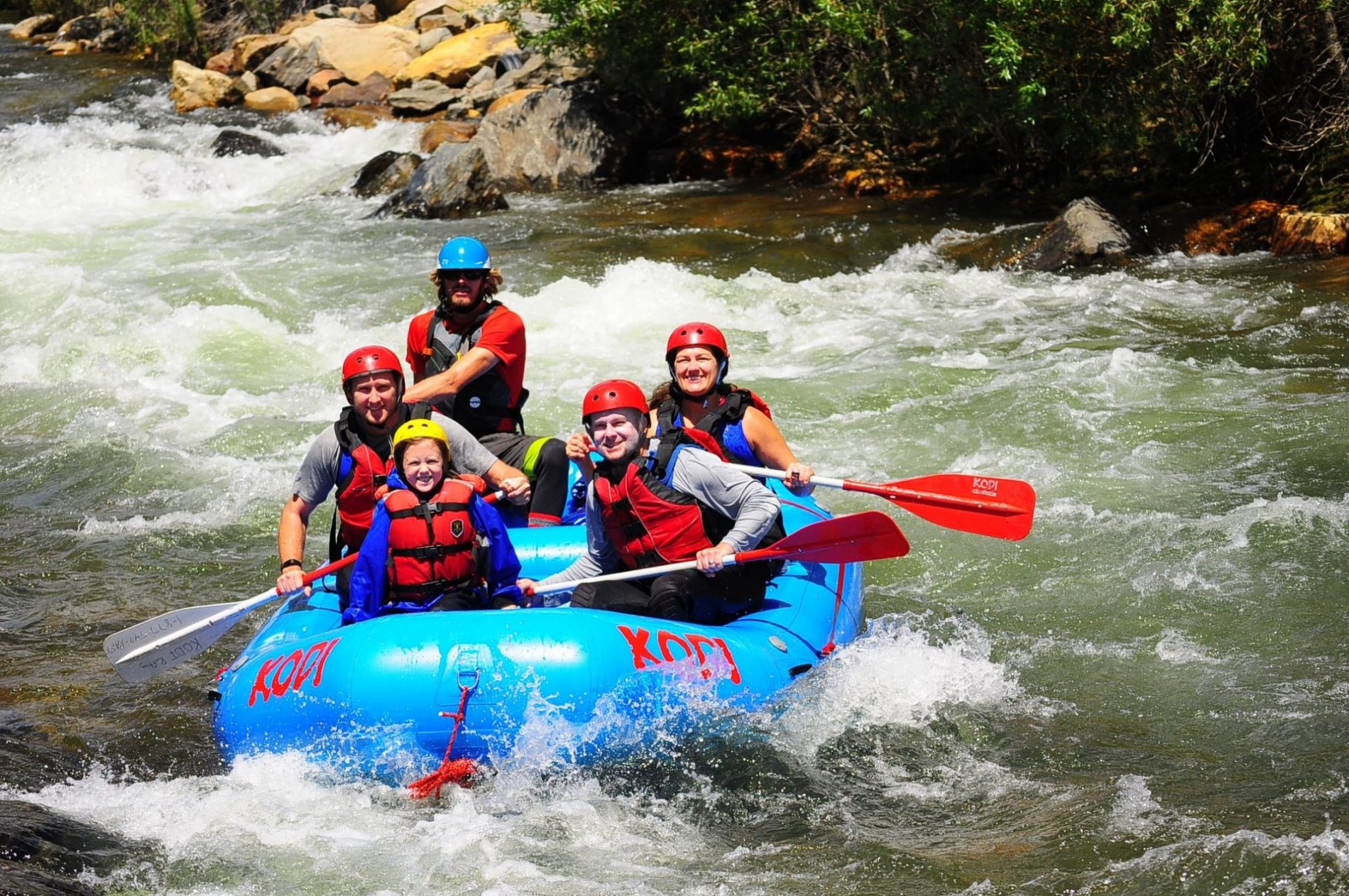Where To Go Whitewater Rafting? Discover Some Great Options Here
Looking to take a vacation and engage in something exciting? Whitewater rafting should be on your list! But do you know the best choices of where to go whitewater rafting?
Whitewater rafting in May through August in the Northern Hemisphere is one of the best ways to make memories that will cause your heart to beat faster as you remember the rush of adrenaline you felt, the beauty of nature, and the sounds of the water and wildlife.
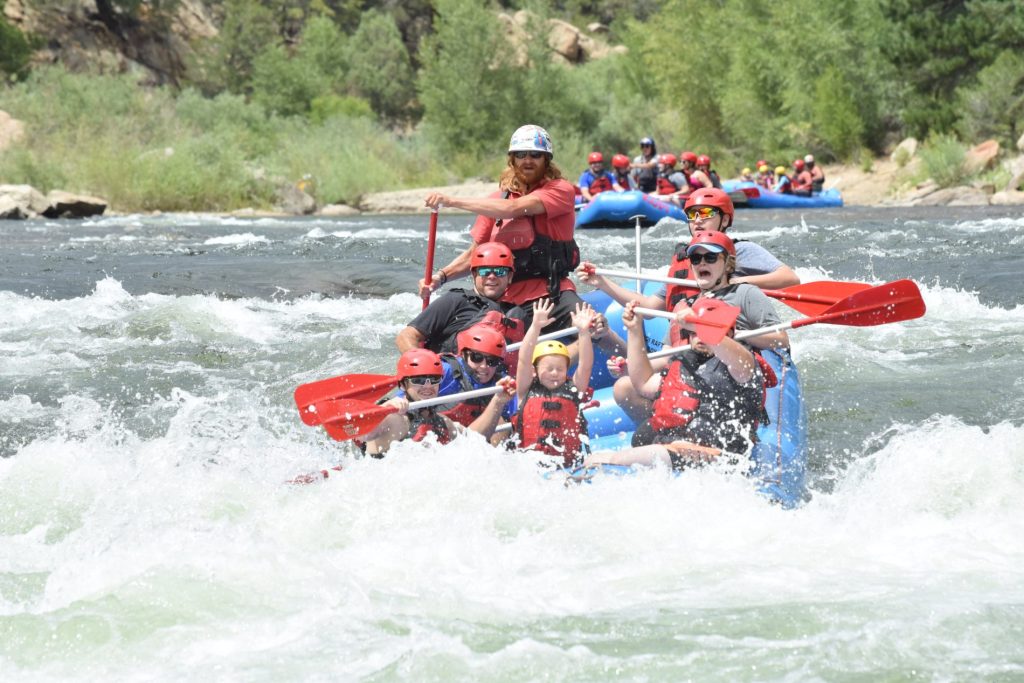
Each continent offers locations where you can plan your holiday and enjoy the best whitewater rafting adventures possible. Let’s talk about North America!
5 Best Places To Go Whitewater Rafting When You’re on Vacation
Are you looking for a place offering a top-shelf whitewater rafting adventure? Well, buckle up your PFD and fasten your helmet because it's time to get your paddle wet at one of these top 5 best whitewater rafting locations in the US.
We're talking about the most incredible places to go whitewater rafting, those river flows that offer ideal rafting conditions for a brief, yet glorious time every season. Let's find out what state has the best whitewater rafting, so you can experience a whitewater adventure like never before.
Arkansas River, Colorado
If you’re a die-hard river rafting fan looking for great places to go whitewater rafting, Colorado whitewater rafting is unquestionably for you!
The Arkansas River is the best place to whitewater raft in Colorado. And it’s no joke, dropping 5,000 feet in 125 miles, and it's the most renowned and straightforward to get there on this list. The views are excellent, the river flows predictable, and the flora and fauna are terrific.
Dead River, Maine
The Penobscot and Kennebec rivers in Maine are managed by hydropower plants and run daily until the fall. The Dead, on the other hand, only appears eight times yearly. There are five spring and three fall releases, so you only have a few chances to get the state's wildest Spring river rafting. Plan your timing carefully!
Deschutes River, Oregon
If you want to go on a desert excursion in the Pacific Northwest, the Deschutes River in dry, warm, eastern Oregon is an excellent option. You can run stretches of the river ranging from 13 miles in a half-day to roughly 600 miles in a three-day journey, an excellent Spring river rafting experience.
Chattooga River - Georgia
There’s no denying this river's beauty and the numerous outdoor activities in the surrounding area of the Chattooga River, It’s one of the best rafting places in the southeast part of the country, and its claim to fame is the signature rapids that were featured in the movie Deliverance. From the Class II float trip section starting at Overflow Road Bridge, to the section 3 class II-IV rapids, to the section 4 class II-V including the famous Five Falls, there is a large variety of river to explore.
Tuolumne River, California
The Tuolumne River is a breathtaking 149-mile river in central California. It is one of the best river rafting rivers in the United States and has been used recreationally since the 1960’s.. It originates in Yosemite National Park high in the Sierra Nevada mountain range.
This is one of the best beginner whitewater rafting trips in the country. The Tuolumne River is a great choice if you're searching for an adventure on the west coast.
Choose the #1 Whitewater Rafting Location in the US
Now that you know many iconic locations where you can go whitewater rafting, please do remember to take certain precautions. Always wear a life jacket while on the rivers and educate yourself about any river before venturing into it. Bring lots of sunscreen, a drink, and of course your camera in a dry bag!
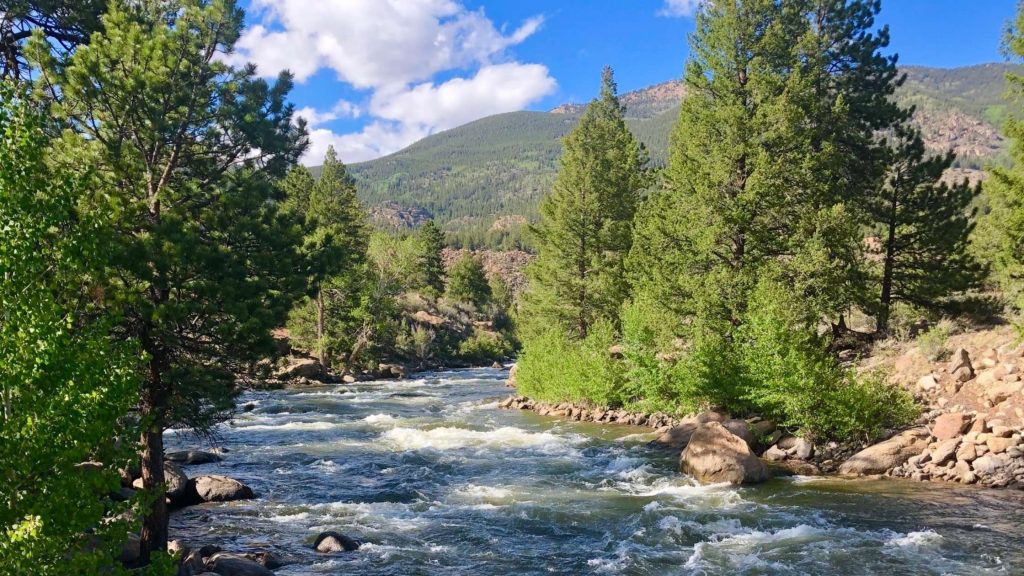
KODI Rafting proudly serves the local community and tourists from all over the world on different Colorado rivers so that you can tick the experience of the very best whitewater rafting off your list this summer.
We’ve discussed some of the most iconic and, as some would say, top whitewater rafting locations in the United States. Hop onto Google Maps and local websites to learn more about rapids and other safety considerations and or course hire an experienced guide. But if you choose KODI Rafting for your vacation, your rafting experience will be ideal since we know how to keep things exciting and keep you safe.You’ve checked out the most frequented rafting places, now is the time to make your reservations, too!
A Detailed Guide on What to Wear for Whitewater Rafting
What to wear whitewater rafting is one of the most common questions asked by our guests and newbies preparing to embark on their first river trip. You'll need to consider a few key things when deciding what to wear for whitewater rafting, from the type of boat you'll be taking and the weather forecast to your comfort level and the physical demands of the trip itself. This guide will help you determine what to wear when rafting based on your location, weather, trip date, and water levels.
Rafting Clothes: What to Wear?
Wearing the right rafting clothes is essential to ensure you have a good time. While you’ll very likely get wet, you want to avoid being soaked, cold, and uncomfortable. The following is a checklist of what to wear, depending on the season and your preferences.
- A good pair of shoes or sandals with straps to stay on your feet and can get wet are important to start with. Alternatively, you can use neoprene “booties” from the company which have traction on the sole and zip up to stay secure on your feet. Slides or flip flops will quickly fall off your feet and are not a good choice.
- A sporty tank top and shorts are great, but be sure they are quick-drying nylon or performance fabrics. You can also layer a swimsuit underneath nylon shorts or swim trunks for guys.

Choose Clothes for the Water
When whitewater rafting, you'll want to wear clothes that can dry quickly and athletic enough that they won't inhibit your movements while climbing in and out of the boat, paddling, or swimming.
Prioritize Layers
When deciding what to wear for a man or woman whitewater rafting outfit (not to mention kids), it's important to prioritize layers. You'll want to start with a base layer that is quick drying and light. Next, depending on the weather, you can add a mid-layer for insulation like a long sleeved nylon t-shirt or a thin wool shirt. Finally, top it off with a waterproof outer layer like a splash jacket.
Avoid Cotton
Everyone from a first-time rafter to a seasoned pro will do best to avoid whitewater rafting clothes made of cotton since cotton stays wet, which can lead to chafing and discomfort, and being soggy and cold throughout your trip.
Sun Protection
Always wear enough waterproof sunscreen when going for any whitewater rafting trip. Apply sunscreen before getting onto the raft or going out for a day trip, and make sure you have some in your dry bag if you are going on an overnight trip or will be out longer than six hours. The sun reflects off the water and at higher altitudes can be very strong.
Life Vest
When it comes to the best clothes to wear for white water rafting, a life vest is both essential and required. It will keep you safe and help you stay afloat if you find yourself out of the raft. Plus it’s bright and easy to spot, and there are straps to act as a ‘handle’ should you need help getting back in the raft.
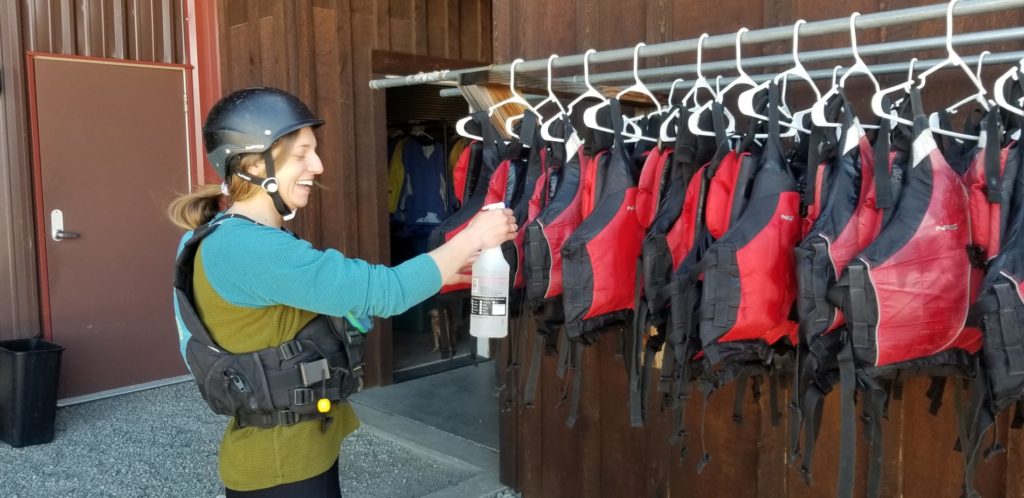
What Rafting Shoes to Wear?
If you're planning a whitewater adventure, it's important that you have the appropriate clothing which includes the perfect rafting shoes. You want something with traction because the river shoreline and the wet rocks can be slippery. The best shoe for whitewater rafting is waterproof (or at least water safe) and stays on your foot when wet and has a heel strap or some other kind of closure system (like Velcro) that ensures they won't fly off mid-river. It’s probably obvious that leather, insulated, or furry shoes or boots won’t work especially well in the water.
What to Wear for Whitewater Rafting
Dressing for fun and comfort is just as important in whitewater rafting as in any other outdoor activity. Depending on the time of year and the location of your trip, you'll want to ensure you have the right gear to stay comfortable.
Here's a quick guide to what to wear for whitewater rafting in Colorado.
What to Wear for Whitewater Rafting in Summer
For many people, the word rafting conjures up images of people hanging onto a rubber raft as it careens down a river. This ultimate guide will give you the lowdown on the best whitewater clothes for summertime rafting trips.
Quick-Dry Shirts or Tanks: Always go for t-shirts or tank tops with quick-drying properties like nylon or polyester (trust us, no cotton!).
Quick-Dry Shorts or Pants: For your bottoms, quick-drying pants and shorts should be on your gear list for whitewater rafting in summer, fall, and spring. You’ll also be more mobile and comfortable in loose fitting shorts or pants, also in lightweight nylon or performance fabrics (no jeans!).
Bathing Suit: The first woman's water rafting outfit layer should be a bathing suit. Bathing suits are recommended even though you will have an extra set of clothes over them. Another solid option is a sports bra with support that can get wet and nylon shorts or even a skort since they tend to be extra comfortable.
Footwear: Are you looking for what shoes to wear for whitewater rafting during summer? If so, you should look for waterproof sandals with comfortable and secure back straps. Note that back straps ensure that your shoes remain on your feet during the rafting trip. Water shoes work well for another option.
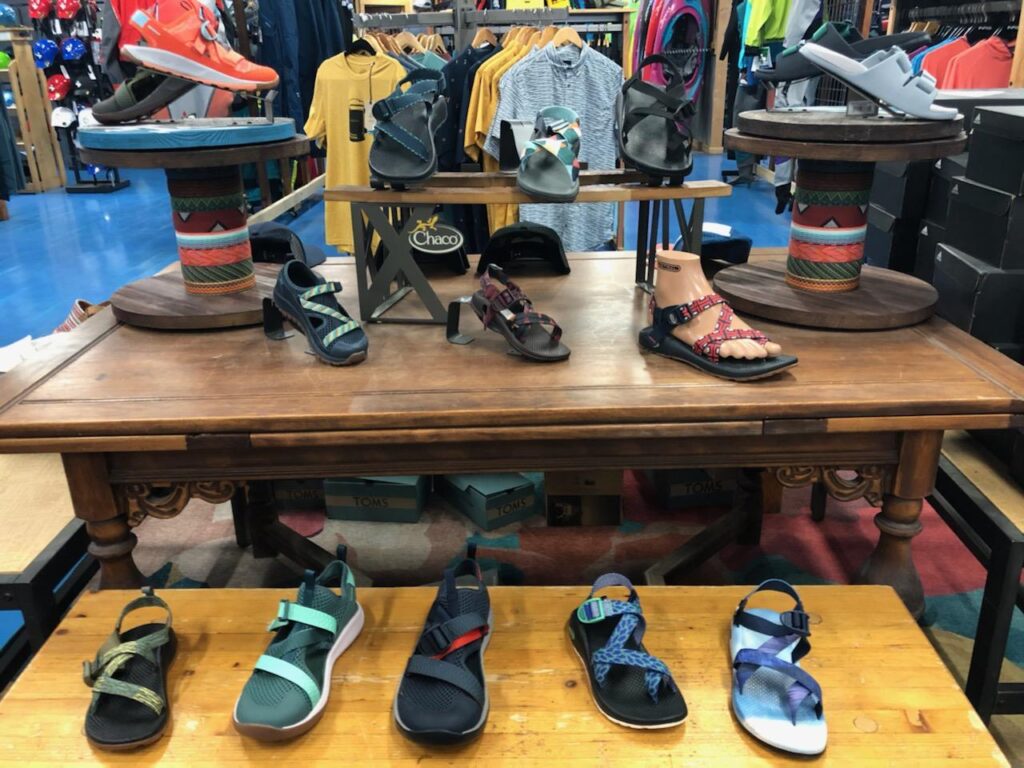
Need to Rent or Buy Whitewater Apparel? KODI Rafting is here to help!
When it comes to whitewater rafting, what you wear on the river raft can be a major determinant of whether you're going to be physically comfortable throughout your trip. Before hitting the river, be sure you have the right clothes for whitewater rafting. When you plan your adventure with Kodi Rafting, rest assured that the top-quality and most appropriate whitewater apparel will be available to you. If you have any concerns or questions about whitewater rafting in Colorado, call us today at 8777477238.
When is Colorado's Whitewater Rafting Season?
Every year, thousands of people flock to Colorado to experience the state’s world-renowned whitewater rafting. But when are the rafts running and when is the best time to go? The answer depends on a number of factors, including water flow, temperature, and dam releases. Here’s a quick overview of what you need to know before you plan your raft trip with Kodi!
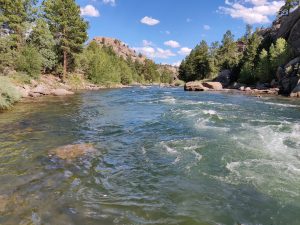
Water Flow
One of the most important factors in determining whitewater rafting season is water flow. In Colorado, the majority of the whitewater rafting season is determined by snowmelt from the nearby mountain ranges. As the winter snow starts to melt in the spring, the rivers begin to swell and the whitewater rapids get more intense. This is considered peak rafting season on the rivers in Colorado.
However, water flow can also be affected by rainfall. If there is a particularly rainy summer period, the Arkansas, Colorado, Blue Rivers and Clear Creek will benefit from higher water levels and more thrilling rapids. This can extend the whitewater rafting season beyond summer into late fall. Conversely, if it’s a dry summer, the rivers will experience lower water levels and the river’s rapids will be less intense and more “bony” or rocky. This can shorten the rafting season or make some stretches of the river unsuitable for beginners and families.
Temperature
Another important factor in determining the rafting season is temperature. While most people think of the heat of the summer as the best time to go rafting, the truth is that springtime is actually better if you’re goal is an exhilarating high-water raft trip! In Colorado, the average temperature in June is about 60 degrees Fahrenheit. However, the temperature can vary widely depending on elevation and location. For example, at higher elevations like Vail, Breckenridge, Frisco, or Kremmling, the average temperature in June is only about 50 degrees Fahrenheit. In lower-lying areas like Denver or Boulder, the average temperature can be as high as 70 degrees Fahrenheit and this affects the Clear Creek trips more.
Dam Releases
Beyonds water flow and temperature, another factor that impcts rafting season are dam releases. In Colorado, there are a number of dams that are required to release water for recreation downstream for anglers and whitewater rafters like Kodi. These dam releases are typically scheduled in advance and are released on a regular basis throughout the summer months to keep river flows consistent.
For example, let’s go deeper into dam releases for the Arkansas River. The Bureau of Reclamation is responsible for the management of water in the Colorado-Big Thompson Project. Part of their responsibility includes the release of water from Twin Lakes Reservoir specifically for white water rafting on the Arkansas River in Buena Vista, Colorado. Typically the Arkansas River receives a dam release every week of the summertime and is guaranteed commercial rafting through Labor Day Weekend.
Why Are Dam Releases Good for White Water Rafting?
The dam releases provide a consistent flow of water that’s ideal for white water rafting. Without the dam releases, the river would be too low in some spots and too high in others, which would make rafting difficult and unpredictable. Dam releases also create waves and rapids that are perfect for an adrenaline-pumping rafting trip!
High Water
One of the most popular times to go whitewater rafting in Colorado is during high water season.
This is when the rivers are running at their highest levels and provide an extra thrill for rafters.
Most river water in Colorado starts as snow… The more snow melt… The higher the water levels. High water typically occurs in late May or early June, although it can vary depending on conditions stated earlier in this article.
End of Season
Just like everything else in nature, Colorado’s whitewater rafting season eventually comes to an end. The exact date varies depending on a variety of factors, but typically speaking, rafting season wraps up in early September. For example, some years the Blue River is too low to raft commercially at all due to low water flow with rocks to avoid, and if the water is too high, low bridges can be a challenge. So there is a sweet spot of river flow that allows us to schedule trips in May/June timeframe for a few glorious weeks. Conversely, the Arkansas River which includes the river stretches Numbers, Browns Canyon, and Pine Creek are guaranteed commercial rafting through Labor Day weekend due to these scheduled dam releases. The Upper Colorado River runs even later than the Arkansas River and typically runs until mid or sometimes even the end of September.
Check out the graphs below to see how the river levels fluctuate throughout the year or go to the USGA National Water Dashboard to see real-time water levels, water quality, and precipitation all in context with the current weather patterns. You can even manipulate the graphs to select the time of year you plan to visit so you know if you’ll be here at the typical high water time or when the river is a little lower and slower.
Check out this Arkansas River flow report showing the water flows from January through October of 2022. It’s interesting to see how the water peaked in late May, dropped and then peaked again later in June, only to experience a steady decrease throughout late summer and into Fall. The little spike in early September was a rainy period.
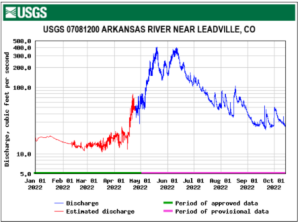
Next, check out this graph showing the flow for the Upper C section of the Colorado River. Because there isn’t a predictable dam release, the flow is much more erratic with tributaries from various rivers and dams flowing into this section of the river and rainfall impacting the flows when the weather brings a nice storm.
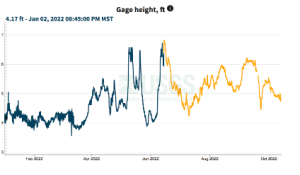
This third graphic shows a map and “hydrograph” of the monitoring sites for all the tributaries of the Colorado River and the monitoring site for the Upper C (the blue balloon). The red dots represent all the monitoring sites of water sources that flow into the Colorado River, so you can imagine how many different data points are needed to understand the flow. This river and creek water is used by various farmers and ranchers, so that water is truly unpredictable for rafting.
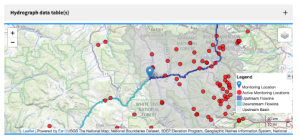
So when is the best time to go whitewater rafting in Colorado? The answer really depends on what you’re looking for. If you want warmer temperatures and lower water levels, mid summertime like July will be your best bet. However, if you’re looking for higher waters, cooler daytime temps, and a more thrilling experience, late May and early June will be a better choice.
If you have any questions about the current river conditions, feel free to contact us and we will be sure to point you in the right direction.. No matter when you decide to go rafting, though, one thing is for sure: you’re guaranteed to have an amazing time! Happy paddling!
Kodi Water Conservation
Let’s face it. We can’t very well go whitewater rafting without water conservation. Water conservation is much more than picking up your trash. It’s recognizing the issue and spreading awareness. It’s working as a community to leave clean water for the next generation. Take a look at some of our conservation and Leave No Trace ethos.
We love our rafting our white waters here in Colorado. But how does water quality affect your rafting life and why should you take part in managing it? We’re going to dive into Colorado water conservation and answer those questions for you.
What Makes Colorado Water Special?
Here in Colorado, we’re known as the headwaters state. Water flow from melting snowpack starts here in our mountains and runs to 18 states in the US through the Arkansas River. Plus the Colorado River flows into Mexico, making our water International. We also have eight major river basins and several aquifers. That’s a lot of water! But when water starts here, so does our need to be careful in our management of this life-giving asset. And to enjoy whitewater rafting for years to come, we have to work at protecting and conserving our whitewater.
What Issues are Affecting Our Rivers? 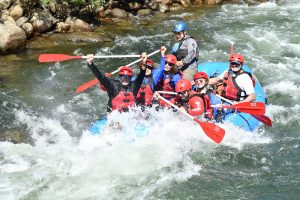
On a planet that’s made up of 71% water, why are we worried about running out? With droughts and climate change, fresh water levels are dropping to record low levels. Glaciers of freshwater are melting into the sea. And increased demand by agriculture, manufacturing, food production, power generation, lawns, pools, and household use means land is drying up. Pollution and runoff from heavily populated areas clog up our rivers and streams. It doesn’t take a rafting enthusiast to be passionate about water conservation. But whether you’re at home or in a raft and shooting the rapids, there are things we all can do.
What Are the Benefits of Water Conservation?
Water Flow
Can you imagine a whitewater rafting trip without the rapids tossing you around? That fun chaos in white, frothy water is because of rapid water flow over rocks and other features on the riverbed. The waters you traverse, like the Arkansas River and Colorado River, depend on healthy river flow. And without it, your rafting trip comes to a halt. But water flow does more than that. Plants and animals depend on moving water to live. The flora and fauna of Browns Canyon are an example. So when you put your oars in the water, that forward motion is a sign of great water conservation!
Water Metering
As stewards of this planet, we must responsibly use water. That’s why water metering is so important. You know of it in your house and see it when you pay your water bill every month. Metering controls the amount of water entering the property. This plays a huge role in water flow as well. Metering also takes place at dams, controlling water levels and flow, controlling the amount of water released from a reservoir down river. This allows you to navigate the white water rapids in your raft.
How Can I Protect Our Rivers for Rafting?
Know Where Your Water Starts
If you’re a local Coloradan, it’s not hard to identify where your water comes from. Snow fall from September through May builds up and waits until summer to melt and flow down the mountains and into our reservoirs, rivers, and homes. Find out where your water company sources your household water from. Or check out the EPA’s page on water mapping. Knowing where your water originates can instill pride and care for taking care of it. And on that next whitewater rafting trip, you can smile knowing you know where the water starts and how it ends up under your Kodi raft.
Protect the Storm Drains
No one wants to take a trip down a river that’s oily and filled with trash. Rafting aside, plant and animal life suffer as well. Did you know that the storm drain at your curb leads directly and unfiltered to your water source? Anything that goes into the storm drains ends up in the water. That’s why it’s important to ensure only rainwater flows into them. Absolutely no dumping from changing your engine’s oil. And of course trash goes in the proper receptacles.
Keep the Yard Under Control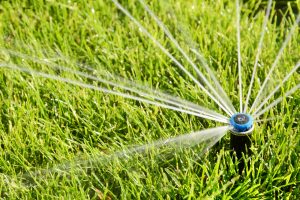
Certain types of turf can be detrimental to water conservation. Some species of grass need large amounts of water. And in times of drought and hot weather, the outcome can be rough on your water supply. Easy approaches like replacing your plants with more drought-conscious species does wondrous things. Rock gardens in place of large swaths of green grass are a nice option. And drought-resistant and species with low water requirements make your life easier by not needing to water all the time, and to ensure your water bill stays as low as possible. Keep the water in the river and raft it instead!
Always Use Water Wisely
An average bath uses anywhere from 35-50 gallons of water each time you jump in your soaking tub. If the grass and plants aren’t wasting it, bathing is. Now that doesn’t mean we’re advocating for lax hygiene. No, hopping in one of our rafting boats without washing first (it’s awkward for everyone) is not our recommendation at all! Turning off the water when brushing your teeth or doing dishes is a great place to start. Switching to showers drops water usage from that 35-50 gallons to just 10 gallons. And you can even shut off the shower water while soaping up to be extra conservative. That time and water saved is well spent on a white water rafting trip with your family.
There are many more ways you can go about water conservation where you live. Like cleaning up after your pets and keeping your lawn a longer length to protect the soil and avoid evaporation, fix any household leaks, and avoiding using salt on icy sidewalks. Learn more about #Water22 tips for water conservation. And did you know that March 22nd is World Water Day? There’s no need to wait until your next whitewater rafting trip down the Colorado River to understand the importance of our water management here in Colorado that flows downstream to so many others.
Everything is a hierarchy and the water world is no different. As human beings, we’re at the top of the water food chain. This means we must take care of our resources. We know you’re excited to get out on the water and experience whitewater rafting. But rafting far into the future requires clean, healthy water. It’s a cause we all have to contribute to. If you want to see what you’re fighting for, book a trip with Kodi Rafting, and let’s get you out on a raft trip!
My Raft Guide and How to Tip Them!
A lot goes into making a fun and memorable rafting trip, and the most significant component is your raft guide! Navigation. Equipment. Safety. Communication. Entertainment, and more. Your guide holds a lot of titles as they deliver a trip you’ll love and remember. But what exactly goes into their training? And how do you give a little extra when you arrive safe and sound as you exit the river?
What Goes Into Being a Rafting Guide?
It takes a particular person to choose raft guiding as a career. Keeping you safe and healthy is their primary concern, but there’s so much more to it than that. Before beginning training, the guide has to have the right personality for the job and many of the first year trainees don’t make the cut. Sometimes, guests offer challenges or don’t pay attention, and rafters have been known to come out of the raft and need assistance. Keeping a level head and treating everyone with dignity and respect are crucial. After that, guide training begins!
Initial Training
A raft guide learns all the ropes in an immersive training program. Guide training requires quick and repetitive learning, some creativity, and tremendous attention to detail to successfully complete the training regimen and get “checked out” on each section of river they learn. After completing a rigorous screening process, guide training programs conduct a river navigation interview. All complete a guide training course. It’s no different for Kodi Guides. Over the span of over an initial 50 hours, your raft guide will become expert in things like:
First Aid and CPR: Colorado requires all guides to get a CPR certification before completing their course. While they practice in the course, all have to do outside work to get their certification. This means a lot of hands-on experience as they prepare to care for you on your trip.
Equipment training: The best guides know how to prepare and maintain their vessel and its equipment like the back of their hand. Training’s conducted using the rafts, along with oars, paddles, and ropes. Knot tying is included to ensure proper tie downs and that all safety riggings are in top working condition.
River and Terrain Navigation: Guides only take their rafts down river sections they have spent hours and days become familiar with. At Kodi, our guides are certified on their assigned sections. So you know they’re experts in the ever-changing water you’re coursing through, and includes learning the location of boulders, rapids, and other river features.
Our guides have the option to attend follow-up training as well. This includes swift water and whitewater rescue. Check out more of what makes a great KODI guide here.
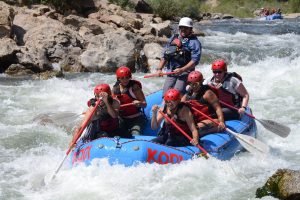 What Does Our Guide Do For Us?
What Does Our Guide Do For Us?
Initial training is only the beginning. Your guide is learning new things every day. Remember that they aren’t only there to steer the raft through the rapids. Their job is to interact with you in all the ways that are fun, educational, and make your experience terrific. Talk to them, ask lots of questions, and hear more about the journey that got them to the back of your raft. And get ready for more stories (and jokes) to follow!
Rafting Preparation
It pays to prepare! And while you’re getting ready for your whitewater rafting trip, so is your guide. Take a look at what to expect on your ride. First on the list is the safety brief for your boat crew. This covers topics such as boat commands, staying warm and dry, and what to do in emergencies. Once that’s out of the way, your guide will issue you the standard equipment. They know weather conditions as they change and will ensure you’re ready for anything. The gear you’ll get can include your Personal Floatation Device (PFD), helmet (required), splash jacket, wet suit, and booties. And your guide is an expert in these so be sure to ask for help when you need it!
History Lessons and Sight-Seeing
Your KODI guide is an expert in the history of their river area. And they actually enjoy talking about it so come prepared with those questions! If you’re an animal lover, you’ve come to the right place for rafting. The water attracts many woodland creatures and chances are you’ll see more than a few. Take a look at our list and see how many you find! Your guide’s eyes are scanning to pick out sights you’ll want to see. From bighorn sheep to freshwater trout to birds of prey, they know exactly what to look for so you can enjoy the ride.
Multi-Day Trips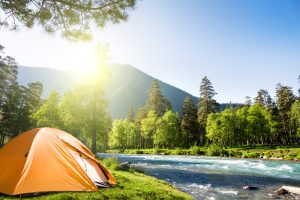
What’s better than one day rafting down the river? Two or more days of course! And with a trained KODI raft guide, this is an adventure like no other. It’s good for all ages so the family’s welcome. Enjoy the water AND camping without lugging your own gear around. Your guide will do that for you in your very own gear raft that follows along on your ride. Your guide wears the hat of the culinary artist as they prepare your food and deal with clean-up. All you have to do is enjoy the beautiful Colorado scenery! Find out more about our multi-day rafting and camping excursions here.
Group Trips
Sure, you can go it alone but rafting is better in groups. It’s that guy’s trip you and your buddies have been planning. Family reunions are great opportunities as well. Or do something unique for your bachelor/bachelorette party. Whatever the occasion, our guides will help prepare your group for a ride to remember. KODI’s preferred group trip is a Class III ride. It offers great opportunities to snag some super fun and memorable photos (we’re talking to you, newlyweds).
And MORE!
Your guide loves the river. And keeping it clean is as important to them as the natural flora and fauna. In Colorado, we practice “leave no trace” which means you take out what you bring in and leave it better than before. Your guide will keep an eye on trash or belongings and prevent anything from falling in. And our guides know the local areas – after all, they live there. They’ll provide recommendations on other activities or places to eat. Just ask.
How Do We Tip Our Guide?
 As you can tell, a lot goes into becoming and being a rafting guide. They love their job and helping you create amazing memories on the water. And they typically live on the outpost during the summer, often in a tent, so tips help support their need for pizza, breakfast burritos, and new gear. If you enjoyed your experience, we encourage tipping your guide. But how do you tip? Is there a standard rule? Well, the answer is how much you feel like giving! Tipping 20% like other service industries is your easiest option. For groups, $50-100 is recommended per raft guide. Our guides prefer cash and you can hand it off directly to say Thank You at the end of your ride. No cash on you? No problem! Ask one of the staff about using a credit card or ATM, and some guides even have Venmo to make it super easy.
As you can tell, a lot goes into becoming and being a rafting guide. They love their job and helping you create amazing memories on the water. And they typically live on the outpost during the summer, often in a tent, so tips help support their need for pizza, breakfast burritos, and new gear. If you enjoyed your experience, we encourage tipping your guide. But how do you tip? Is there a standard rule? Well, the answer is how much you feel like giving! Tipping 20% like other service industries is your easiest option. For groups, $50-100 is recommended per raft guide. Our guides prefer cash and you can hand it off directly to say Thank You at the end of your ride. No cash on you? No problem! Ask one of the staff about using a credit card or ATM, and some guides even have Venmo to make it super easy.
 If you feel a tip isn’t warranted, please let us know why so we can understand what to do differently. While we recommend a tip, not tipping without feedback can get a little weird for all parties.
If you feel a tip isn’t warranted, please let us know why so we can understand what to do differently. While we recommend a tip, not tipping without feedback can get a little weird for all parties.
Ready to get out there and spend time with your very own KODI rafting guide? Call us to schedule your next single or multi-day trip today! We’re excited to give you a great experience!
Should I Bring the Kids White Water Rafting?
You’ve seen the rafts careening over rocks while spraying the boat riders with foam. You’ve even taken a couple of trips yourself. But now you’ve got kids in tow and aren’t sure if a white water rafting trip is in the books. Do you need to choose a gentler vacation activity or can the kiddos get in on the fun?
Well, we’re here to let you know that white water rafting is a thrilling activity for people of all ages, children included. And with the right choices and preparation, you’ll ensure it makes for wonderful family memories.
Choose the Right Class of Rapids for Your Age Group
As adventurous as your kids may be, it’s important to know their limits. When you’re planning a trip, you want to consider the classes of whitewater river rapids on your ride. Experts divide rapids into six classifications, but with kids along, we’re going to highlight only on the first three classes. Balanced with river flow levels (here is a link to the Arkansas River flow through Browns Canyon), these will give you a great idea of how much adventure you’re signing up for.
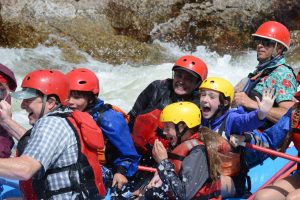
Class I Whitewater
Think of the lazy river at your local water park. More of a float trip, tiny rapids form when water moves over shallow beds of obstacles and while on the mellower side, these still count as rapids! You’ll experience these for the majority of your Class I trip. Younger kids and even timid adults will enjoy the peaceful, easy flow of these waters. You’ll likely do some paddling to avoid obstacles like boulders and bridges, or your guide will use an oar rig where you just get to ride along and enjoy the beauty of the river and valley.
Class II Whitewater
Class II rapids generally create whitecaps that are 1-3 feet high which means these are the ones you can really see and experience. Easy to navigate, these waters will definitely excite the kids! Maneuvering between rocks and ledges will get the raft rocking and the kids a bit wet, especially if they choose to ride in front. Now we’re talking. And if anyone gets nervous, they can always sit in the center of the raft while the bigger kids and adults ring the sides of the raft with their paddles.
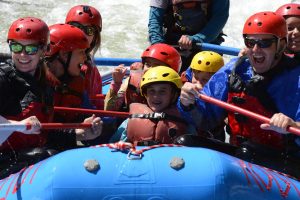
Class III Whitewater
Due to moderate difficulty, younger children shouldn’t be riding the class III rapids. With many irregular waves (4-5 feet high) and tumultuous water, strong adventurous older kids and teens will love these! Water will definitely crash over the boat and everyone will get wet. That’s what we wanted though, right? As long as you follow your guide’s direction and pay attention, these bumpy rides will be super fun.
If you want to know more about the 3 remaining river classes, check out our classifications page or whitewater classifications article that will quickly bring you up to speed.
Gear Up for a Bumpy (and Wet) Ride
The raft and paddles aren’t the only equipment you’ll need for a safe and exciting ride. Exposure to the climate, bright sun, and water temperature can creep up on you. Preparation is key here but that doesn’t mean you need to bring along enough gear to sink the raft. A few common-sense items will make all the difference.
Avoid the Cold
Even with the bright sun overhead, waters can be chilly, after all, most of the river water is recently melted snow. Keeping children and yourself suited up will keep you warm should you fall in or get a wave coming your direction. Wetsuits cover the majority of your body and will keep any ice water where it’s supposed to be; anywhere but on you. Base layers underneath made of nylon, but never cotton is the best choice. Booties will keep the kid’s feet warm and dry in the water-logged raft. And added protection from sharp rocks if they fall out, and while maneuvering around the raft.
Avoid Sunburns
Even submerged in overcast skies, you can still burn in the sun at our high altitudes. And with most trips running for miles, that’s a lot of exposure time. Waterproof sunscreen is essential to protect any skin not covered with a wetsuit. It’s recommended to use anything SPF 30 or higher, and also liberally apply SPF lip balm to prevent chapped lips. We never advise drinking river water (giardia is a well-known parasite from mountain animals upstream) so pack along some reusable water bottles and fill them at the outpost before heading out. Throw a carabiner on it and hook it to the raft so you don’t lose it when the ride gets exciting. You’ll never stop hearing about your child’s favorite bottle floating away.
Protect Your Head
Rocks. Ledges. Trees. Other riders. When the ride gets adventurous, the chances of hitting your head increase. Nothing to worry about because you’ve got the kids wearing safety helmets. And these aren’t a recommendation – regulations require them on your whitewater rafting trip. If the kids are complaining about the sun in their eyes, add a ball cap underneath. And if you must wear sunglasses or eyeglasses, be sure to include a “leash” around your neck so they don’t go in the drink.
For more information on what to bring, check out our handy checklist and our article about what to wear on the river here.
Pay Attention to your Guide and The Rules of the River
White water rafting guides receive extensive training to really know the river, how to handle any situation, and of course to successfully navigate your raft down the river safely. They’re equipped to get the most novice riders, your children in this case, through a fun and enjoyable ride. Aside from rowing commands in the raft, a safety briefing always starts out the trip on a great foot. And before your raft touches the water, they’re going to give a detailed overview of guide commands as well as practice once you start down the river in the easy sections. Rafting with kids means they’ll be repeating them a few times throughout the trip. Some of the most common whitewater rafting commands are:
Put in: this is the start of the trip when the raft launches off into the river’s water
Take out: the end of the rafting trip and where the gear and raft get pulled out and loaded up on trailers to go back to the outpost
River Left/River Right: most guides will sit in the back of the boat looking down river. When something comes up that the kids will enjoy, they’ll use these commands. Watching for and pointing out wildlife, geologic features, and interesting river elements makes the trip entertaining in addition to the guide’s jokes!
Swimmer: whether intentional or not, a rider who falls in the river is a swimmer. If you or one of the kids falls in, the guide will shout out “Swimmer!” to get everyone’s attention as the members of the boat pull the swimmer back into the raft.
Flip: the raft has capsized. And now you and the kids are all swimmers. We’ll say that one was intentional.
Safety Kayak: safety kayakers will go with your raft to keep an eye on any hazards, new rapids, or rescue swimmers.
Yes, Take the Kids!
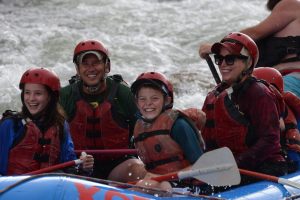 White water rafting is a great way to spend time outdoors with the kids and build amazing family memories you’ll cherish. Adventurous. Wild and wet. Everything a child loves. There doesn’t have to be hesitation if you’re taking the whole crew along on your next vacation.
White water rafting is a great way to spend time outdoors with the kids and build amazing family memories you’ll cherish. Adventurous. Wild and wet. Everything a child loves. There doesn’t have to be hesitation if you’re taking the whole crew along on your next vacation.
When you’re in Colorado for your next trip, choose the best with the Kodi Rafting Team online or by phone at 970-668-1548. We’re here to get you and the kids out on the water today!
White Water Rafting Checklist
One of the most frequent questions we get asked is what to bring along to your whitewater rafting adventure, so here's a handy checklist for our guests to look over and use in order to be best prepared for a fun day on the water!
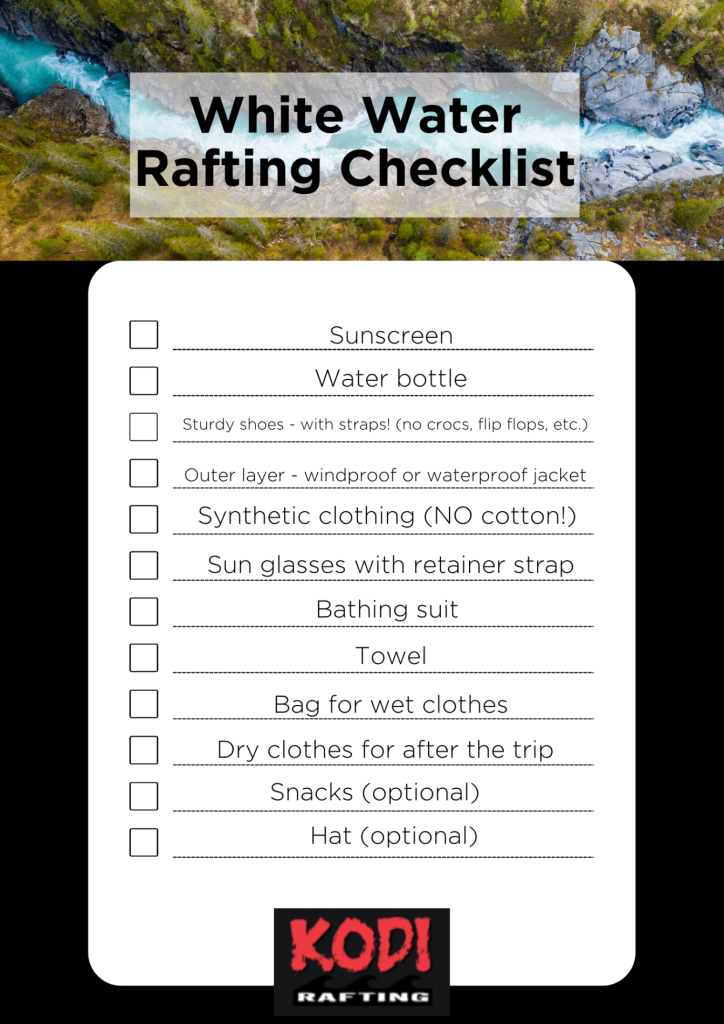
Colorado Winter Snow’s Impact on Spring Rafting
We’re in the heart of winter, but we can’t help but wonder how the upcoming rafting season will kick off this spring! After all, winter snowfall and snowpack in the winter have a direct correlation to how our rafting season plays out. Even in the winter months, we start to have a pretty decent idea of how rafting will be later in the year.

How does snowpack in the winter impact our rafting season?
Snowpack forms from a series of snow storms throughout the season. Snowfall essentially builds layers of preserved moisture to form in high altitudes and cold weather areas. In the winter, snow pack greatly impacts skiing, snowboarding, snowmobiling, backcountry touring, and avalanche conditions, but it’s important to remember that snow pack affects Colorado year round - not just in the winter. During the warmer days of summer, snow pack can affect all your outdoor activities, especially whitewater rafting.
To put it simply, Colorado’s snowpack acts like a drip irrigation system. As temperatures rise in the spring, snow melts slowly and steadily, first saturating the dry ground, then flowing into our rivers and streams, and filling up our reservoirs. When we get heavy winter snowfall, that snowpack is likely to produce higher-than-normal water runoff in the rivers and streams across Colorado.
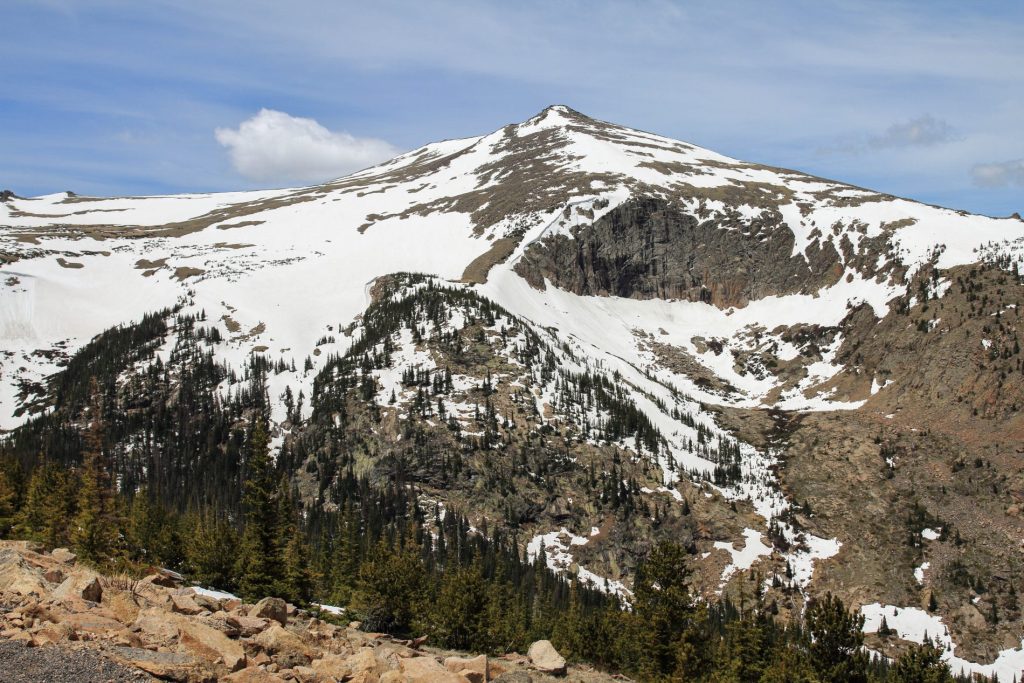
On the flip side, when Colorado experiences a winter drought without significant snowfall, rivers and stream levels drop and our rafting season may be shorter. Lower water means that our guests and raft guides will experience slower water along with lower water levels. For those of you excited about rafting in the Spring when water is likely to be higher, we encourage you to watch the timing if you want the most exciting whitewater of the season!
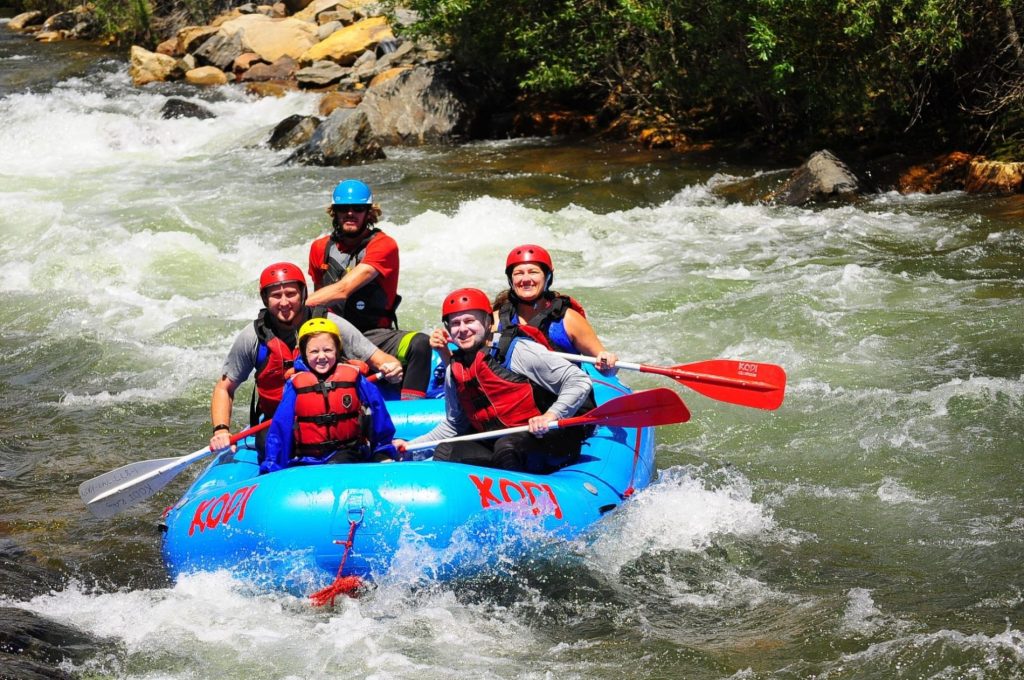
What are previous years showing us?
There is an impact we’re experiencing from our warming climate and ongoing drought. Climate change and warming temperatures can lead to faster snow melting. The trend of warmer climates over the years is concerning and is disrupting this system in numerous ways. Year after year, unusually dry soils from warmer temperatures and a lack of moisture has the earth absorbing more of the water from our snowpack. This means that less water is making it into rivers and streams, essentially limiting the efficiency of the melting snow. When temperatures rise earlier in the Spring and snow stops falling, the snow melts more quickly, and the land becomes drier in the late summer timeframe, impacting wildfire risk.
When researchers analyzed years of snowpack data across the western half of North America, especially in Colorado, they found that snow has been melting earlier in the year than it did in the mid- to late-20th century. If snowmelt begins to dry up earlier in the season, there is less runoff to flow through the ground during the summer months. Unless precipitation increases through rain in warmer weather, there will be fewer overall water resources for us all.
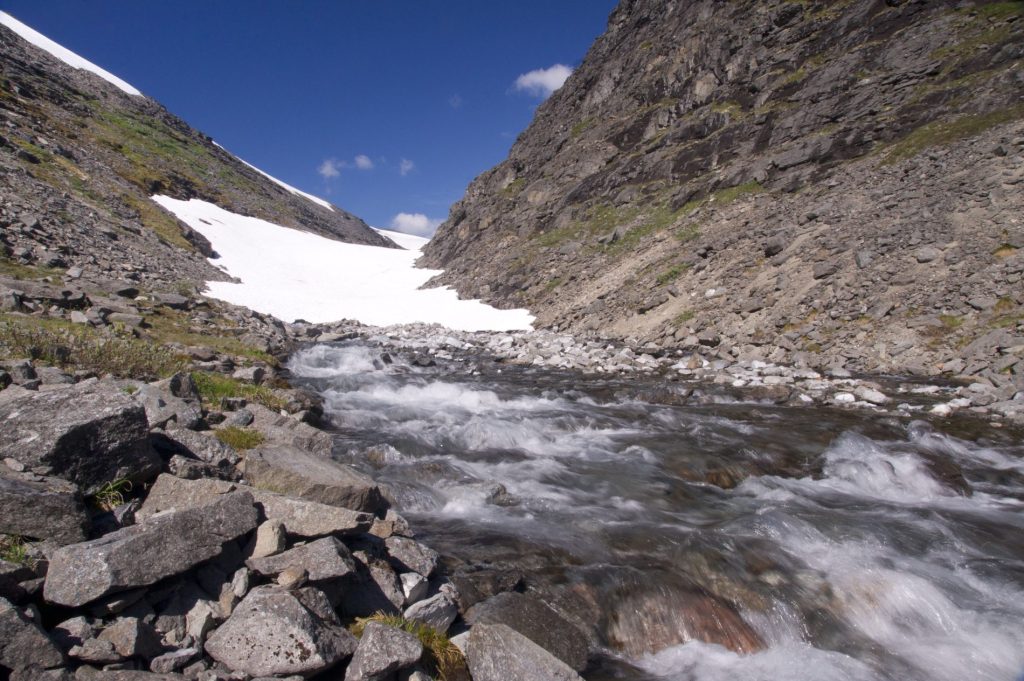
Colorado experiences many different seasonal changes throughout the year and we can even see weather change dramatically over the course of a single day. Our hope is always for more snow throughout our winters which in turn produces better rafting conditions for our whitewater raft guides and guests. High water is measured through stream gauge river sensors recording streamflow in cfs, which stands for cubic feet per second. In other words, river cfs is the amount of water flowing past the sensor at any given point in time. The more water rushing past the sensors indicates the whitewater volume moves at a very swift and fun pace.
Whether we have a long season of high water or lower river flows, we can’t wait to see you on the rivers this season. It’s not too early to start planning your trip with Kodi Rafting. Choose your river trip here and contact us today for information and reservations online or give us a call at 970-668-1548, so we can help guide your plan for experiencing the rivers of Colorado!
The Majestic Arkansas River
We’re so lucky to call Colorado home not only for the endless beauty, but because we get to raft one of the longest and most magnificent rivers in the country - the beautiful Arkansas River. The Arkansas River runs through Colorado, Kansas, Oklahoma, and Arkansas, with the river’s source starting in our state of Colorado near Leadville, and dumping out into the Gulf of Mexico. The Arkansas River is a major tributary of the Mississippi River and is the sixth-longest river in the United States, making it one of America’s most popular rivers for adventure seekers and water enthusiasts alike. The Arkansas River runs as a steep, fast-flowing mountain river through the Rocky Mountains in it’s narrow valley dropping 4,600 feet in 120 miles- making it perfect for whitewater rafting.
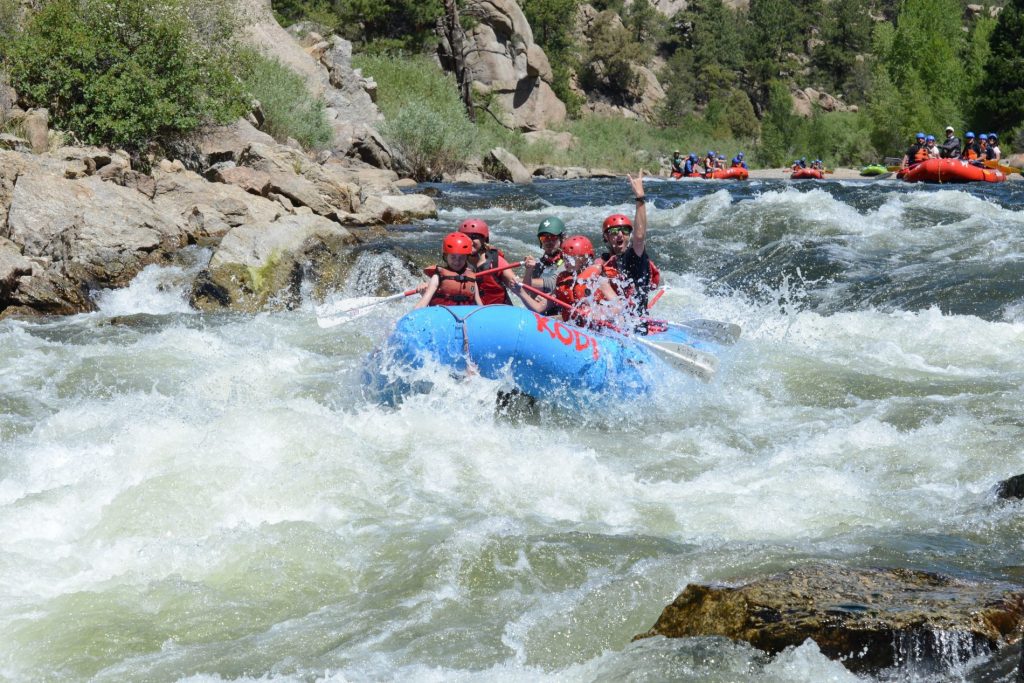
So, what’s the major significance of this particular river? Millions of years ago, the Rocky Mountains formed the Sawatch Mountain Range and over time, rain and snow runoff from these mountains sculpted the rocks creating jagged peaks and sweeping valleys. This shaped the landscape all the way from the Colorado mountains to where it flows into the Mississippi River in Arkansas.
Once it was formed long ago, the Arkansas River played an important role in western population expansion. From 1819 to 1846, the Arkansas River was the official border between Spanish Mexico and the United States. It was only after the Mexican-American war that the Arkansas River was said to lie within the boundaries of the United States. There was also a brief gold rush along the river which attracted thousands of early explorers to look for gold in its waters, but it wasn’t long before the gold was exhausted and gold seekers moved on elsewhere.
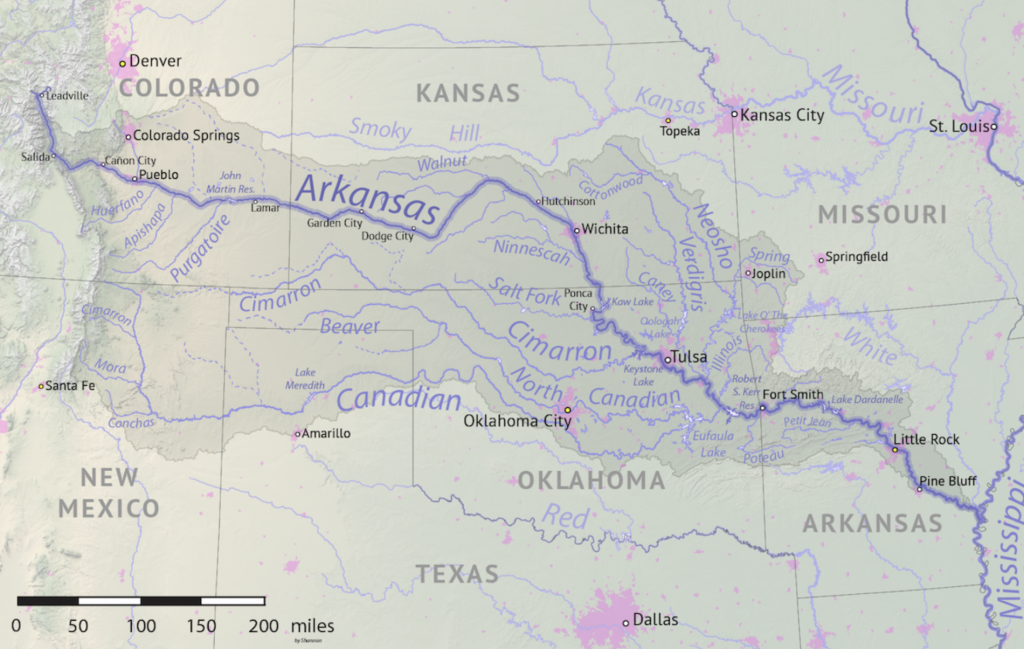
While irrigation is still significant along the Arkansas River in eastern Colorado and western Kansas, water management has helped to keep the river flowing throughout the year. Managing the water levels enables white water rafting groups to enjoy this river responsibly during summer months. The Ark, as locals call it, gains momentum as it flows past some of the biggest mountains in Colorado, benefiting from their abundant snowmelt in the spring and summer and the tributaries that feed it. Water levels vary depending on the amount of snow and precipitation we receive each winter season which melts from the many mountains surrounding the river. Just imagine how much water comes down from some of our tallest peaks that are 14,000 ft tall! After snowmelt has run out, get it while the gettin’ is good because the Arkansas' raftable flows only happen during a specific time of the year, with that flow slowing by mid-August. Basically, Clear Creek Reservoir, which is 3-4 miles downstream of Granite pumps water into the Arkansas so that the water levels don’t go below a certain raftable level during our high peak summer months.
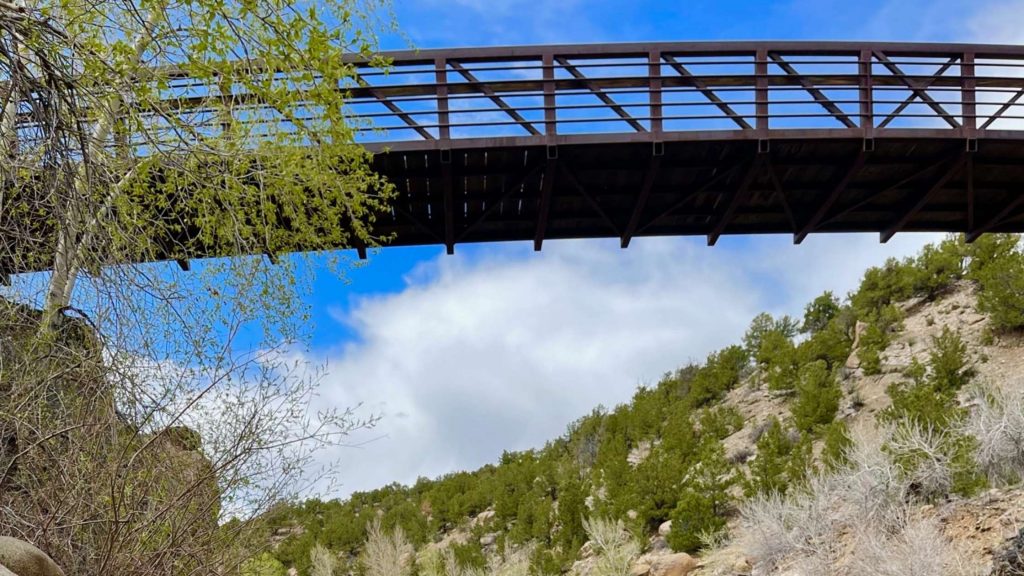
KODI Rafting’s Arkansas River raft trips range from mild, scenic floats to world famous class III to class IV whitewater. Our most popular Arkansas River trips take guests through the gorgeous Browns Canyon National Monument or through the raging rapids of the Numbers north of Buena Vista. The Arkansas River is ideal for families with young children, groups with mixed skill levels, and adventurous teens and adults. Choose your river trip here and contact us today for information and reservations online or give us a call at 970-668-1548, so we can help guide your plan for experiencing the waters of the Arkansas River!
Planning the Perfect Guys Trip
As life gets more complicated, it grows harder to stay in touch with our friends due to jobs, families, cross-country moves, you name it! So should you just give up and say, “I guess we’ll just see each other on social media from now on.”? No way! The answer is to plan an annual guy’s trip. It’s easy to create a habit, or ritual, of meeting up with your buddies in person every year.
Whether you’re trying to put together the best bachelor party in recorded history, you want some special one-on-one time with your sons, or you just want a memorable weekend with the college buds, we’re here to provide options for an awesome guys trip in the Buena Vista area.

Honestly, a getaway to Colorado just isn’t complete without a trip down the river. We’ve got you covered for that adventure! From class III trips involving some difficulty navigating objects (rocks!), to the class V thrill seeker/experts-only trip, you’re not going to want to skip out on the high adventure that whitewater rafting gives your group of guys. Join us for a rafting/zip-lining combo to double up the adventure. Enjoy two fun, quintessential Colorado activities in one easy, incredible day. Zip and Raft the Arkansas River starts at the Arkansas River Outpost for our 1/2 Day Browns Canyon raft trip—one of the world’s most popular whitewater rafting adventures! A whitewater rafting trip is a staple adventure when venturing to the mountains, and we’re here to help lead your guys on the experience of a lifetime.

After a day on the river, keep up the outdoor adventure by experiencing Colorado’s beauty in the summer with a camping trip. There are tons of options of where to camp, but to narrow it down to a few, here’s what we suggest: For those desiring an off-grid experience, dispersed camping on BLM land could be the perfect option for you. With few amenities and more immersion in the great outdoors, dispersed camping is definitely more of a rustic experience. Still pack light, but make sure to bring plenty of warm layers (it gets chilly at night even in the summer!), a sturdy tent with a rain fly, and ample water (including for washing up) for a trip to any of these dispersed campgrounds!

For dispersed camping near a mountain lake, head to Baldwin Lake, Hancock Lakes, or Pomeroy Lakes. With high-altitude lakes and stunning views, these campgrounds are perfect for those who want to bring a fishing rod along or take a very cold water dip. Make sure to find a place to pitch your tent at least 100 ft from the lakeshores to protect the pristine alpine environment. It’s also super important to check the local guidelines for fire restrictions, you may be restricted to your camp stove. Know before you go!
As we mentioned, while you’re camping with your guys, fishing in any of the numerous bodies of water is a must do. Our lakes, rivers, and streams in Colorado are filled with loads of different fish species, with trout being the most prevalent. Some local fishing spots we recommend checking out near Buena Vista are the Arkansas River, Arthur Lake, Blue Lake, creek fishing, and high altitude lakes. The Arkansas River has gained national recognition for the quality of its fishing and the many aquatic insects which are the source of its consistent dry fly fishing. There are high elevation meadow segments, steep bouldered canyons, and miles of productive pocket water holding 1500-4000 trout per mile. For more info on fly fishing or to book a guided trip, check out Ark Anglers, a local BV company that is well respected in the industry.

From May to October, Colorado boasts some of the most exciting and picturesque off roading trails in the country. When you come out with your guys, renting ATVs, 4-wheelers, or a heavy-duty Jeep is another thrill you’ll want to add to the list of activities. We recommend giving BV Jeeps or NOVA Guides out of Camp Hale a call for trail recommendations and rentals for a half-day, full-day, or even a multi-day adventure. Exploring the Buena Vista area on a high powered machine gives way to some pretty special hidden places in the mountains you guys won’t want to miss!

After your days of packed adventures, head over to one of our favorite places in BV, Deerhammer Distillery located at 321 E Main Street. The cocktails are handcrafted and delicious. Deerhammer is known for the best Sloe Gin Fizz ever, and they distill single malts, bourbon, rye, limited run single barrel spirits including a clear whitewater whiskey that is infinitely drinkable. Get a cocktail, take the tour with said cocktail in hand, mingle with the raft guides and other colorful residents that frequent this local institution. And of course, take home a bottle with a couple of recipes to relive the experience at home after you enjoy their funky little patio. And the food truck on the patio is a great place for food too. The Distillery is definitely a fun place for you and the guys to hang! For other great food and beverage options, here is a recent article highlighting some of our favorites!

We’re looking forward to being the peak of a great adventure with the guys by showing you a great time on the river. We hope these other fun ideas will make for an unforgettable trip that you’ll want to make a yearly ritual. No matter what fun activities you plan, we know that a great guy getaway is going to offer activities that the whole group can get on board with, and it will give you the chance to interact with your fellow guys in a really fun atmosphere, so enjoy all the possibilities of a great outdoor adventure! Colorado will give you guys all of that and so much more because it’s such a special place and truly the perfect dude-centric getaway.

